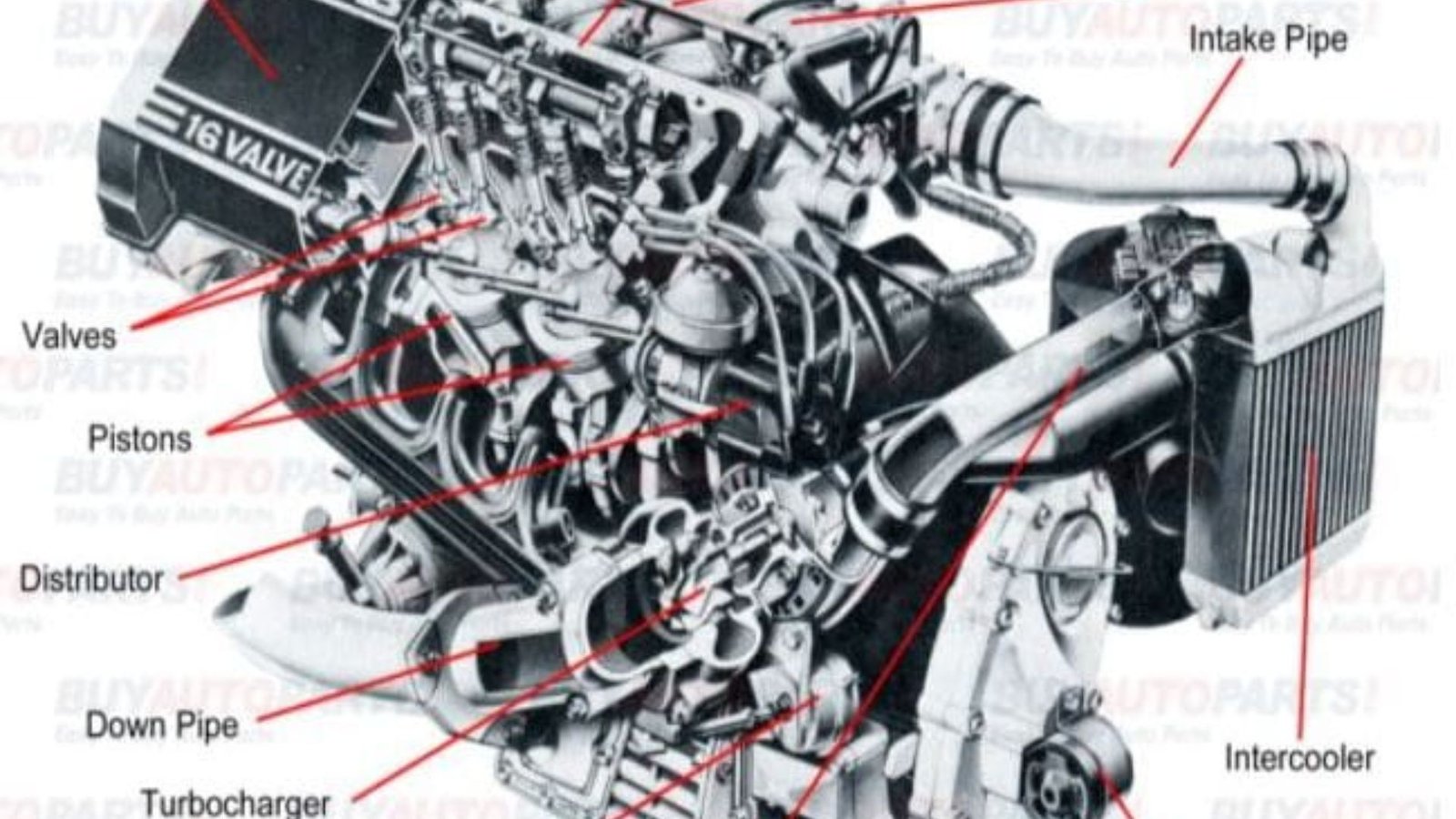Turbocharged engines are a popular choice for enhancing vehicle performance and efficiency. By compressing the air entering the engine, turbochargers significantly boost power output and improve overall driving dynamics. Here’s a detailed look at how turbocharged engines work and the benefits they offer.

1. What is a Turbocharged Engine?
1.1 Basics of Turbocharging
Overview: A turbocharged engine uses a device called a turbocharger to increase the engine’s efficiency and power.
How It Works:
- Turbocharger Components: A turbocharger consists of a turbine and a compressor connected by a shaft. The turbine is driven by exhaust gases, which in turn drives the compressor to force more air into the engine’s cylinders.
- Increased Air Intake: By compressing the air entering the engine, the turbocharger allows more air and fuel to be burned, resulting in higher power output.
Benefits:
- Increased Power: Turbocharging can provide a significant boost in horsepower and torque without increasing engine size.
Drawbacks:
- Complexity: Turbocharged engines can be more complex and may require additional maintenance.
2. How Turbochargers Enhance Performance
2.1 Increased Power Output
Overview: Turbochargers allow engines to produce more power from the same engine displacement.
Key Points:
- More Air and Fuel: By forcing more air into the engine, turbochargers enable more fuel to be burned, resulting in increased power.
- Higher Horsepower: Turbocharged engines can offer substantial increases in horsepower compared to naturally aspirated engines.
Benefits:
- Enhanced Acceleration: More power translates to quicker acceleration and better overall performance.
Drawbacks:
- Heat Generation: Increased power can lead to higher engine temperatures, requiring effective cooling systems.
2.2 Improved Fuel Efficiency
Overview: Turbocharged engines can be more fuel-efficient compared to larger naturally aspirated engines with similar power outputs.
How It Works:
- Smaller Engine Size: Turbocharging allows for smaller engine sizes that can deliver the same power as larger engines, leading to better fuel economy.
- Optimized Performance: Turbocharged engines can achieve better fuel efficiency by operating at higher efficiency levels when driving aggressively.
Benefits:
- Better Miles Per Gallon (MPG): Turbocharged engines often provide improved fuel economy compared to larger, non-turbocharged engines.
Drawbacks:
- Driving Style: Fuel efficiency benefits depend on driving style and conditions.
3. Enhanced Driving Dynamics
3.1 Improved Throttle Response
Overview: Turbocharged engines offer quicker throttle response, improving driving dynamics and performance.
How It Works:
- Instant Power: The turbocharger provides a surge of power almost immediately, enhancing throttle response and driving feel.
- Reduced Turbo Lag: Modern turbochargers are designed to minimize turbo lag, the delay between pressing the accelerator and experiencing increased power.
Benefits:
- Smoother Acceleration: Provides a more responsive and engaging driving experience.
Drawbacks:
- Potential Lag: Older or less sophisticated turbo systems may still experience some lag.
3.2 Better Towing and Carrying Capacity
Overview: Turbocharged engines improve a vehicle’s ability to tow and carry heavy loads.
How It Works:
- Increased Torque: Turbochargers enhance engine torque, which is crucial for towing and carrying heavy loads.
- Efficiency in Load Handling: Improved power and torque make it easier to handle demanding driving conditions, such as towing trailers or transporting heavy cargo.
Benefits:
- Enhanced Capability: Offers better performance in demanding scenarios, such as off-road driving or heavy towing.
Drawbacks:
- Potential Overheating: Increased power can lead to higher engine temperatures, necessitating effective cooling systems.
4. Technological Advancements in Turbocharging
4.1 Variable Geometry Turbochargers
Overview: Variable geometry turbochargers (VGTs) adjust the turbocharger’s geometry to optimize performance across different engine speeds.
How It Works:
- Adjustable Blades: VGTs have adjustable blades that can change their angle based on engine speed and load, improving efficiency and reducing turbo lag.
Benefits:
- Enhanced Efficiency: Provides better performance and fuel efficiency across a range of driving conditions.
Drawbacks:
- Complexity and Cost: More complex and potentially more expensive than traditional turbochargers.
4.2 Twin-Scroll Turbochargers
Overview: Twin-scroll turbochargers use separate exhaust gas paths to improve efficiency and reduce lag.
How It Works:
- Separate Exhaust Paths: Twin-scroll turbochargers have two separate exhaust passages, which help to reduce interference between exhaust pulses, improving turbocharger efficiency.
Benefits:
- Reduced Lag: Offers quicker boost response and improved performance.
Drawbacks:
- Cost and Complexity: More complex design can lead to higher costs.
5. Maintenance and Care for Turbocharged Engines
5.1 Regular Oil Changes
Overview: Turbocharged engines often require more frequent oil changes to maintain optimal performance and longevity.
How It Works:
- High-Temperature Operation: Turbochargers operate at higher temperatures, placing additional stress on engine oil.
- Frequent Changes: Regular oil changes help to ensure that the oil remains effective in lubricating and cooling the turbocharger.
Benefits:
- Longevity: Regular maintenance helps to extend the life of the turbocharger and engine.
Drawbacks:
- Increased Maintenance: Requires more frequent attention compared to non-turbocharged engines.
5.2 Check for Boost Leaks
Overview: Boost leaks can reduce the effectiveness of a turbocharger and impact performance.
How It Works:
- Inspection: Regularly check for leaks in the turbocharger system, including hoses and connections.
- Repairs: Address any leaks promptly to maintain optimal performance.
Benefits:
- Performance Maintenance: Ensures the turbocharger operates efficiently.
Drawbacks:
- Inspection Required: Regular checks and maintenance are necessary.
Conclusion
Turbocharged engines offer significant advantages in terms of power, efficiency, and driving dynamics. By compressing air and enhancing combustion, turbochargers provide increased horsepower, better fuel economy, and improved throttle response. Modern advancements in turbocharging technology continue to refine these benefits, making turbocharged engines a popular choice for enhancing vehicle performance. Proper maintenance, including regular oil changes and checking for boost leaks, is essential to ensure the longevity and optimal performance of a turbocharged engine. Whether you’re looking for a sportier drive or improved efficiency, turbocharging offers a compelling solution.




